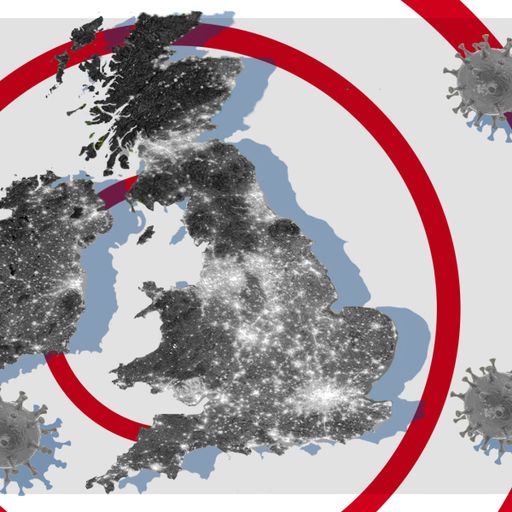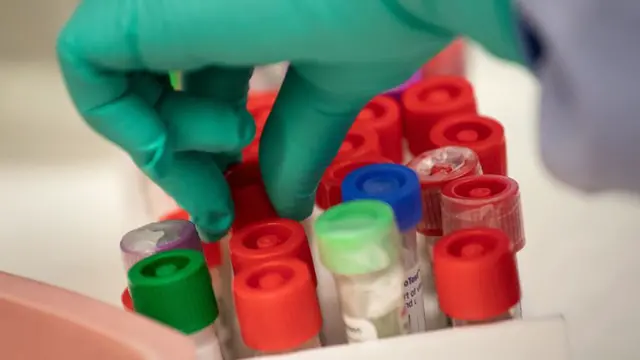Scientists have analysed the entirety of the novel coronavirus' genomic sequence to assess claims that it may have been made in a laboratory or been otherwise engineered.
The
coronavirus
outbreak first emerged in the Chinese city of Wuhan last December and has caused an international pandemic, infecting more than 198,000 people and leading to over 7,900 deaths.
International blame around the
COVID-19
pandemic has incited conspiracy theories about its origin.
Without evidence Zhao Lijian, a spokesperson for China's foreign ministry, suggested on Twitter that the virus could have been brought to Wuhan by the US army.

China depicts heroic fight against coronavirus - this is the reality
While he may have been insincerely provocative in response to American officials describing the outbreak as the Wuhan virus, stressing its beginnings in China, he received thousands of retweets.
Rumours linking the virus to the Wuhan Institute of Virology - based on geographic proximity, and without any endorsement from qualified epidemiologists - have also circulated.
Shortly after the epidemic began, Chinese scientists sequenced the genome of the virus and made the data publicly available for researchers worldwide.
Even the integrity of these scientists and medical professionals has been called into question by conspiracy theorists, prompting an international coalition of scientists to sign a joint letter of support for them and their work, published in medical journal The Lancet.

Coronavirus: What you need to know
The value of the genomic sequence could prove vital for those developing a vaccine, but it also contains key details revealing how the virus evolved.
New analysis by researchers at the Scripps Research Institute in the US, UK and Australia discovered that the virus has proved so infectious because it developed a near-perfect mechanism to bind to human cells.

Coronavirus: The infection numbers in real time
This mechanism is so sophisticated in its adaptions that the researchers say that it must have evolved and not been genetically engineered in their paper, titled "COVID-19 coronavirus epidemic has a natural origin", published in the journal Nature Medicine.
Dr Josie Golding, the epidemics lead at the Wellcome Trust in the UK, described the paper as "crucially important to bring an evidence-based view to the rumours that have been circulating about the origins of the virus causing COVID-19".
"They conclude that the virus is the product of natural evolution, ending any speculation about deliberate genetic engineering," Dr Golding added.

Seven essential tips for home working
So how do they know? One of the most effective parts of the virus are its spike proteins, molecules on the outside of the virus which it uses to grab hold of and then penetrate the outer walls of human and animal cells.
There are two key features in the novel coronavirus' spike proteins which make its evolution a certainty.
The first is what's called the receptor-binding domain (RBD) which they describe as "a kind of grappling hook that grips on to host cells", while the second is known as the cleavage site, "a molecular can opener that allows the virus to crack open and enter host cells".

Coronavirus: Son finds way around lockdown to talk to dad
If researchers were actually going to design a virus to harm humans then it would be constructed from the backbone of a virus already known to cause illness, the researchers said.
However the coronavirus backbone is radically different to those which are already known to affect humans, and in fact are most similar to viruses which are found in bats and pangolins.
"These two features of the virus, the mutations in the RBD portion of the spike protein and its distinct backbone, rules out laboratory manipulation as a potential origin for [the coronavirus]," said Dr Kristian Andersen, corresponding author on the paper.

Image:The virus has been linked to the Huanan Seafood Wholesale Market in Wuhan, China
Another study of the genome by researchers at the Wuhan Institute for Virology reported that the virus was 96% identical to a coronavirus found in bats, one of the many animals sold at a Wuhan seafood market where it is suspected the virus jumped to humans.
However the new research was unable to determine whether the virus evolved into its current pathogenic state in a non-human host before jumping to a human, or if it evolved into that state after making the jump.
 简体中文
简体中文





